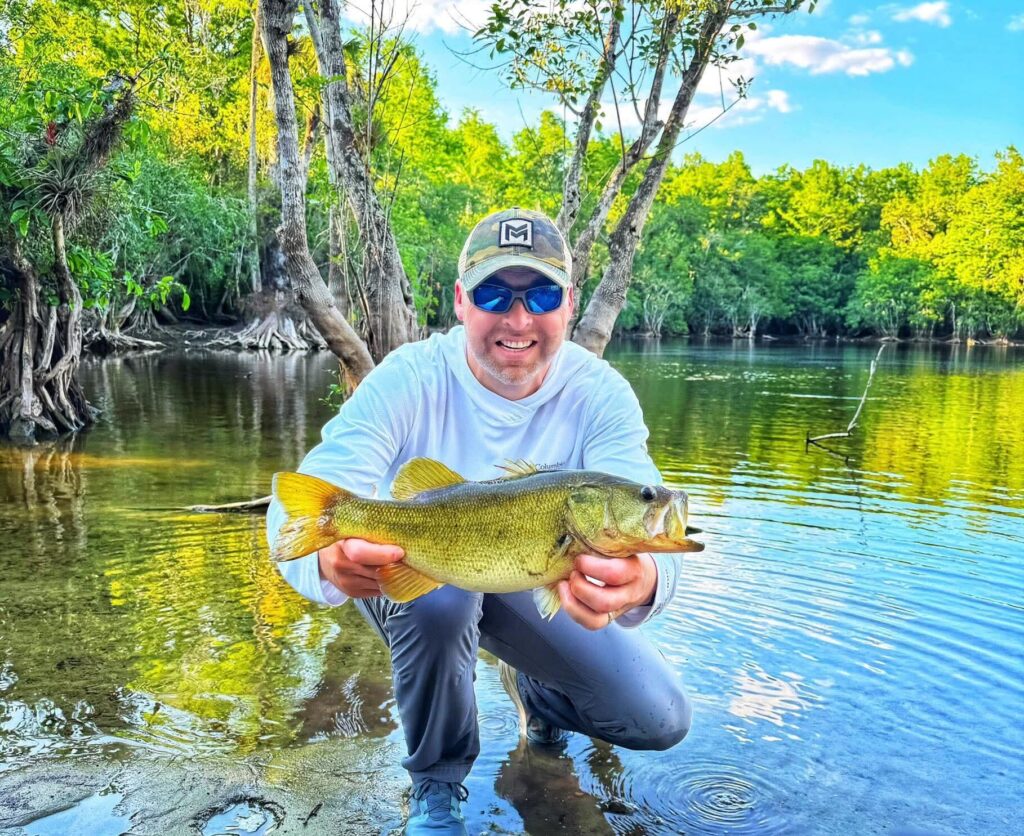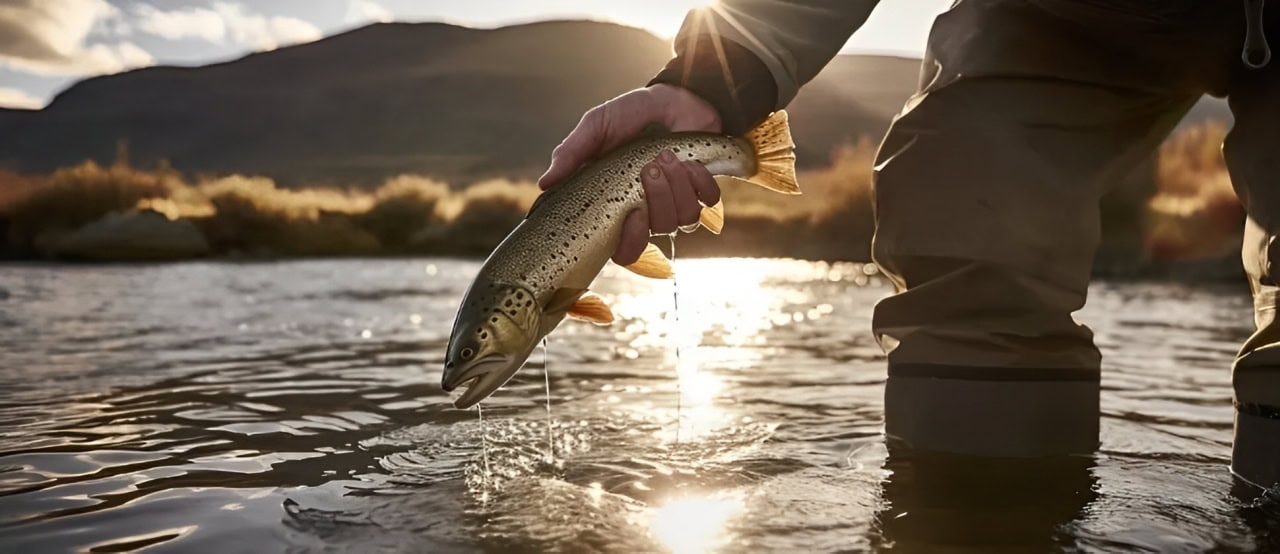Understand What Fly Fishing Is and Its Unrivaled Appeal Across the United States
What is fly fishing, exactly? At its heart, it’s more than just a method of catching fish; it’s an immersive experience that connects anglers to the diverse landscapes and vibrant ecosystems of the United States. For the landowner, or prospective land buyer, understanding the unique allure of fly fishing in various regions can unveil hidden values and recreational opportunities on properties across the country. It’s a pursuit deeply tied to the land and water, offering a serene escape and a thrilling challenge, no matter where your interests lie.
The beauty of fly fishing in the U.S. is its incredible versatility. From the highest peaks to the lowest coastal plains, a different adventure awaits, each offering a unique connection to nature and its inhabitants. This vast tapestry of waters supports a wide array of species, making the sport a year-round passion for many.
The Cold Embrace of Inland Waters: What is Fly Fishing for Trout, Salmon, and other cold water species all about?
When most people envision fly fishing, their minds often drift to the pristine, cold waters of mountain streams and rivers, home to the iconic trout. But what is fly fishing like in these environments, specifically for species beyond trout? The United States is blessed with an abundance of these settings, from the legendary rivers of the Rocky Mountains, teeming with wild cutthroat, rainbow, and brown trout, to the classic spring creeks of the East, where native brook trout thrive in crystal-clear flows.
Beyond the beloved trout, these colder inland waters also host formidable species like salmon and steelhead. These powerful, migratory fish offer an entirely different level of challenge and excitement for the fly angler. Their sheer size and incredible strength demand refined techniques and robust equipment, often leading to unforgettable battles in scenic, rugged settings. Steelhead, in particular, are renowned for their acrobatic displays, making them a prized target for those seeking a true test of skill.
But cold-water fly fishing isn’t just about the big names. Many smaller, equally captivating species inhabit these waters, from agile grayling in remote Alaskan and certain Western rivers to various types of char, like the vibrant Dolly Varden. Each species presents its own unique behaviors and feeding patterns, keeping the angler constantly engaged in the art of presentation and observation. The appeal of these cold-water fisheries often lies not just in the fish, but in the stunning, often wild, landscapes they inhabit—places where clean water and untamed wilderness define the experience.

The Warmth of the Heartlands: What is Fly Fishing for Bass, Panfish, and Other Unexpected Species Like?
While cold-water fly fishing captures much of the popular imagination, the warm-water fisheries of the U.S. offer an equally rich and accessible fly fishing experience. So, what is fly fishing like when you leave the mountain streams and head to the heartland? Across the vast central and southern states, a different set of challenges and rewards awaits in lakes, ponds, and slow-moving rivers.
The king of warm-water fly fishing is arguably the bass. Both largemouth and smallmouth bass are aggressive, powerful fish that readily strike a well-placed fly. Casting to a largemouth lurking in lily pads or stripping a streamer for a smallmouth in rocky river currents provides explosive action and a visceral thrill. These species are widely distributed, offering fantastic fly fishing opportunities in nearly every state, often close to urban centers, making them highly accessible.
Beyond bass, the myriad species collectively known as “panfish” provide endless enjoyment, especially for those new to the sport or seeking a relaxed outing. Bluegill, crappie, perch, and sunfish are abundant, eager to strike, and incredibly fun on light fly rods. These species often inhabit smaller ponds and lakes, perfect for a quick escape, and their willingness to bite makes them an excellent introduction to the art of fly fishing. They are a testament to the idea that fly fishing isn’t always about pursuing trophy fish, but about the pure joy of the tug on the line and the connection to local waters.
Furthermore, many warm-water systems also hold less-conventional fly rod targets like carp and pike. Carp, often overlooked, are intelligent and challenging adversaries on a fly rod, demanding stealth and precision. Pike, with their predatory nature, offer exciting topwater blow-ups and strong fights. These diverse opportunities showcase how fly fishing extends far beyond the typical trout stream, offering thrilling pursuits in unexpected places.

The Salty Edge: Fly Fishing in Coastal Areas for Briny Beasts?
For those seeking an entirely different dimension of fly fishing, the coastal waters of the United States present a world of exhilarating possibilities. So, what is fly fishing like when you venture to the salty edge of the continent? From the sun-drenched flats of Florida to the teeming estuaries of the Carolinas and the rugged coastlines of the Northeast, saltwater fly fishing offers encounters with powerful, hard-fighting species in vast, dynamic environments.
Along the Southeast coast, including regions like Florida, South Carolina, and North Carolina, anglers target iconic species such as redfish, speckled trout, and snook in shallow, clear-water flats. The thrill here often comes from sight-fishing – spotting a fish, making a precise cast, and watching it track and inhale your fly. These coastal ecosystems are incredibly productive, supporting a diverse food web that makes them ideal for fly fishing. Further offshore, or in deeper coastal waters, anglers can pursue larger game fish like tarpon, permit, and even certain tuna species, requiring heavier tackle and specialized techniques for their immense power and speed.
The allure of saltwater fly fishing lies in its blend of the hunt and the fight. It’s often a game of patience, observation, and quick reflexes, as conditions can change rapidly with the tides and weather. The vastness of the ocean and its intricate estuarine systems provide an endless canvas for exploration.
Investing in the Angler’s Dream: Land Ownership and Expert Guidance
For the passionate fly angler, the ultimate dream often involves owning a piece of land that grants direct access to exceptional fishing, or at least places them in close proximity to world-class waters. Owning land with a prime trout stream flowing through it, a private pond teeming with bass, or acreage near productive saltwater flats offers more than just convenience; it’s an investment in a lifestyle and a legacy.
Imagine stepping out your door directly onto a pristine stretch of river, having exclusive access to a quiet lake, or being minutes away from a coastal launch point. This ownership provides unparalleled privacy, control over your fishing experience, and the opportunity to enhance habitats for desired species through responsible land management. Such properties aren’t just real estate; they are a direct pathway to countless hours of recreation, rejuvenation, and connection with nature. They can also offer significant long-term value, as properties with desirable water features and recreational access are increasingly sought after.
However, acquiring land with such specific attributes requires specialized knowledge. Factors like water rights, riparian access laws, floodplain regulations, habitat suitability, and even migratory patterns of fish can significantly impact the value and utility of a property for fly fishing. A standard real estate agent, while proficient in residential sales, may not possess the nuanced understanding required for these complex transactions.
This is precisely where working with a specialist in land and recreational properties becomes critical. A land specialist understands the intricate details that make a property ideal for fly fishing. They can:
- Identify suitable water features: Beyond just “water,” they know what constitutes a healthy, fish-producing environment.
- Navigate complex regulations: From water rights to conservation easements, they can guide you through the legalities that impact your ability to fish or manage the land.
- Assess habitat potential: They understand how terrain, vegetation, and existing ecosystems contribute to a robust fishery.
- Uncover hidden value: They can spot opportunities in properties that might be overlooked by general agents, ensuring you find the best fit for your angling pursuits.
- Connect you with the right resources: Whether it’s a fisheries biologist or a contractor for stream enhancement, they often have a network of relevant professionals.
Investing in land for fly fishing is about securing your personal haven and future adventures. Partnering with a member of KW LAND® ensures you’re not just buying acreage, but truly investing in your passion, with expert guidance every step of the way.



